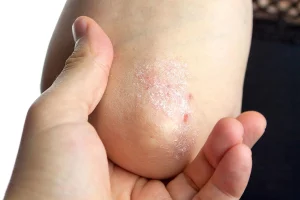DID YOU KNOW that there are some side effects to your birth control pill that fail to make it onto the insert? The drug companies warn you about the nausea, spotting, and the depression, but they don’t tell you that the pill can cause animals to stop eating, prevent them from avoiding predators, and hinder them in attracting mates. That’s right, that little pill can leave a wild animal lethargic and disorientated, all of its usual instincts skewed by synthetic chemicals.
A report assessing the environmental impact of pharmaceuticals making their way into the water and woodlands, ‘Medicating the Environment: Assessing Risks of Pharmaceuticals to Wildlife and Ecosystems,’ was published earlier this month. One study discussed in the report shows that just a small amount of synthetic estrogen, like that used in birth control pills, put into a river will wipe out an entire population of minnow fish. The synthetic estrogen changes the reproductive abilities of the fish, causing them to develop intersex organs.
We are taking more pharmaceuticals every year and the top drugs taken, like painkillers, antihistamines, antidepressants, weight regulators, and hormonal contraceptives are excreted into the sewage system. The report argues for an update of the treatment facilities that are supposed to filter out these additions before recycling the water back into homes. At this time, significant amounts of certain drugs are still found in the water on the other side of treatment processing, which is a problem that deserves a discussion of its own. However, some of the untreated water ends up in rivers and lakes. Birds and other wildlife also feed on the worms in the sewage, fish live in the water, and the drugs work their way into the ecosystem through a number of different channels.
Synthetic estrogen is not only excreted by humans via contraception, but also via hormone-replacement therapy for menopausal women and transgender women. However, the number of people using hormone-based drugs is low when compared to painkillers or anti-histamines, which are used by almost everyone at one time or another and which can have a surprising effects on wild animals. By causing them to be less aware of pain, painkillers can cause animals to over-exert themselves when chasing prey and make them vulnerable to injury and exhaustion.
So-called “tolerable” side effects of drugs for humans — the report mentions libido-loss and lethargy in particular — can be disastrous for an individual animal and, as a result, a population of wildlife and thus a whole eco-system. An animal robbed of its instinct to reproduce, of its instinct to hunt or graze at the optimal place and time, with low energy and low appetite will, eventually, die. We may weigh up the benefits versus the costs of all kinds of medications to ourselves individually before deciding if we should use them regularly, but we don’t usually consider the overall cost to the world we live in. When every problem has a pill and over-prescription of most medications is rife, with no end in sight, it might be worth adding in these drawbacks to our cost/benefit analysis.
It’s no secret that drug manufacturers are oftentimes a major source of unregulated pollution. Un-metabolized, highly potent drugs from the source are emptied at their original full dosage into waterways. But it’s not just human use and manufacture of pharmaceuticals that’s causing these problems, though: industrial farming is likely having an even bigger impact on the environment through use of synthetic hormones and other drugs on vast numbers of animals and plant crops. The waste from this process can also end up as fertilizer and enter into the food system that way. Industrial and agricultural use of pesticides that mimic estrogen add substantially to a toxic load that is already extremely high.
Many of us now recycle, maybe drive a hybrid, avoid plastics and hope to make a positive contribution towards caring for the planet, but most will not think of the extended influence of overuse of pharmaceuticals when they think of ways they can “make a difference.” Of course, some drugs are absolutely necessary and we ought to update the sewage and water treatment systems to allow for use of those drugs without harm to the environment. Yet, it could be argued that as a society, we are extremely overdependent on pharmaceuticals and resort to taking a pharmaceutical drug when we could be healing the problem with a more holistic perspective. More and more of us are taking an environmentally-conscious stance when it comes to the food we eat, the clothes we wear, the cleaning products we use, and the transport we take, and are critical of those corporations that do not incorporate evaluation of their environmental impact into their strategy. With vegetarianism and veganism on the rise, more of us are concerned about how our habits affect animals. But will all this matter if we overlook one of the biggest yet most subtle ways we affect our environments and the other species sharing it with us? Maybe it’s time we look to the medical industry to correct short-sightedness on side effects.
Image Credit: “Dying Earth” by deviantART/maudt
















